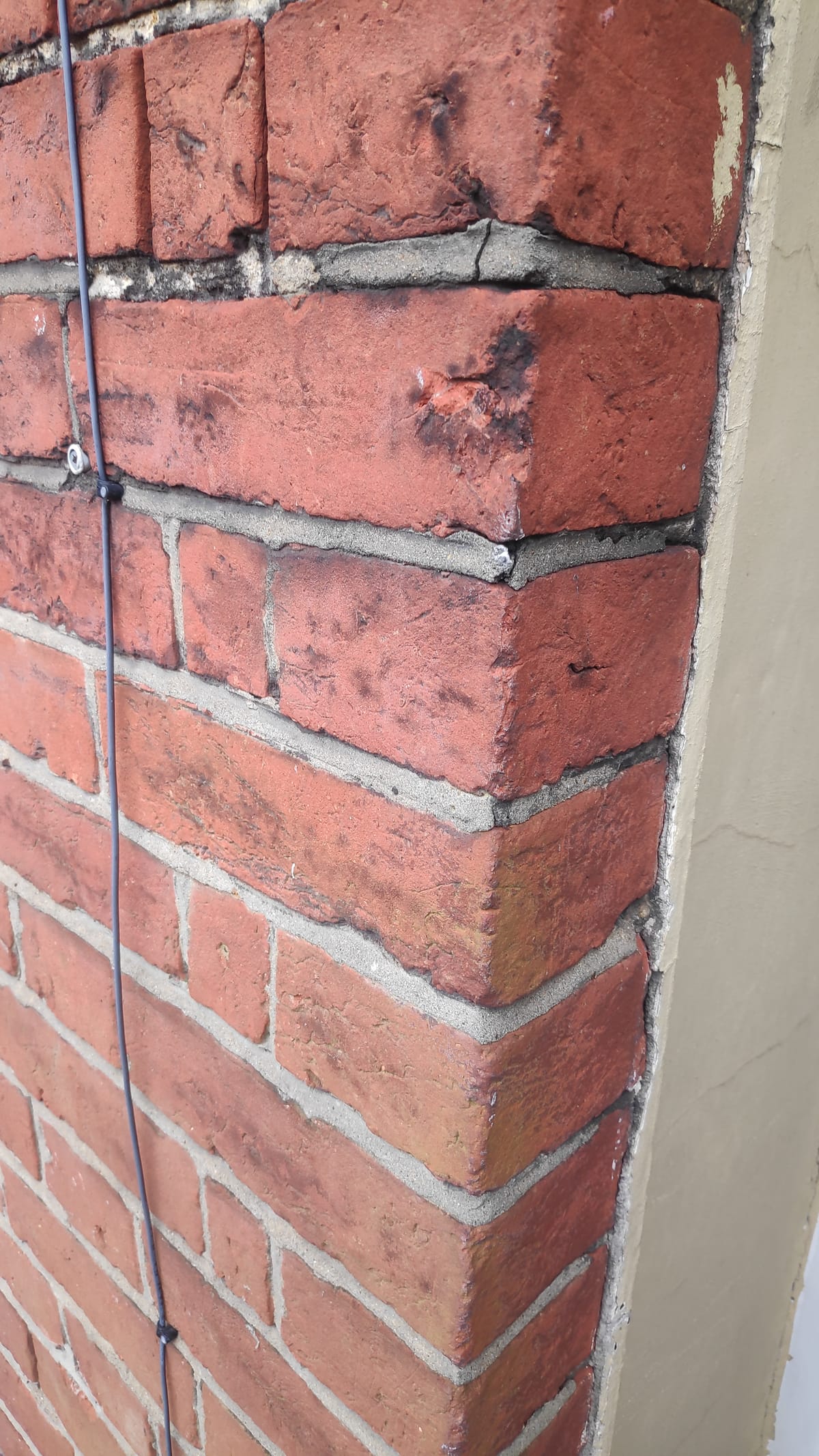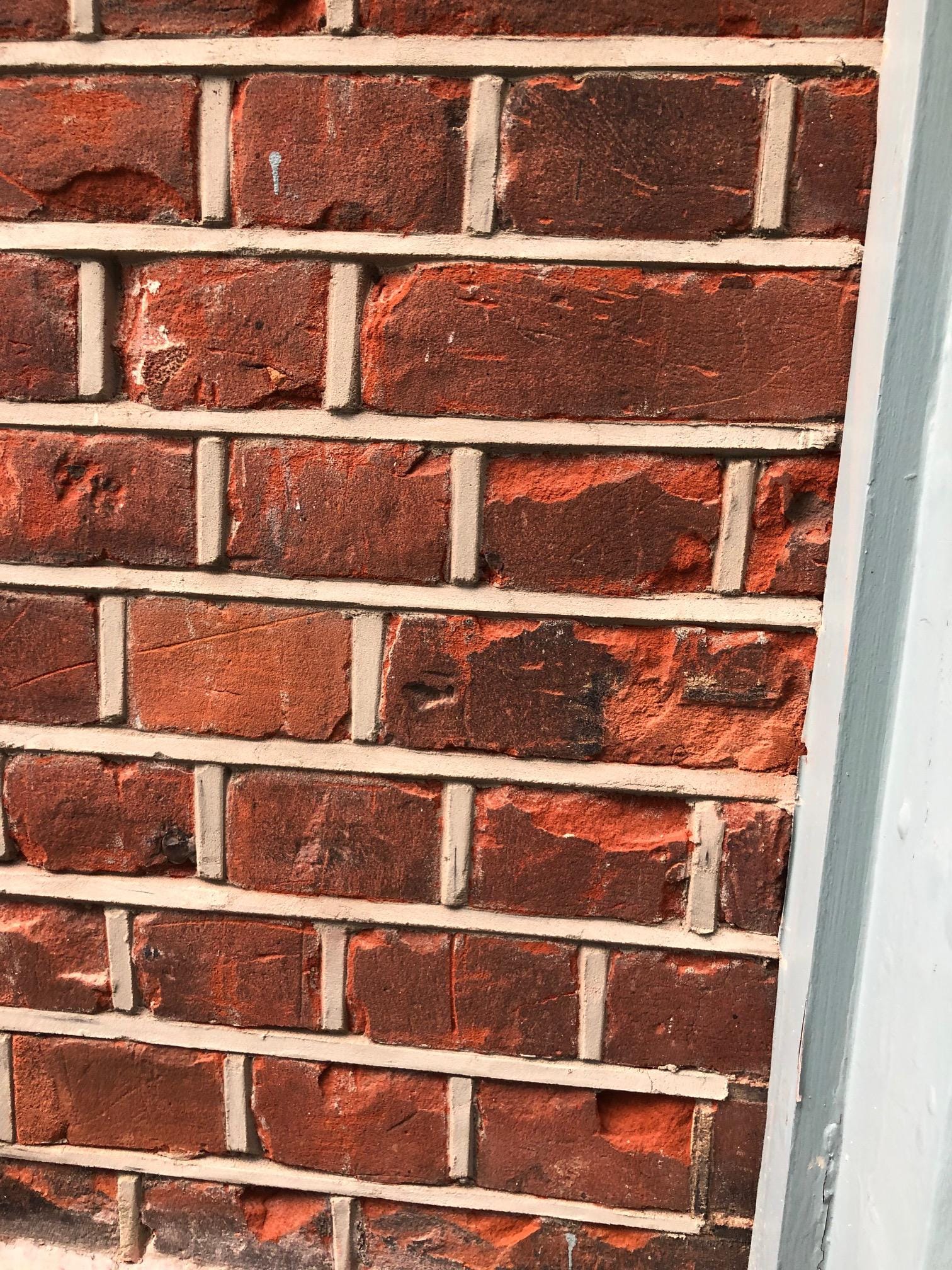Repointing
Raymond isn't happy with the state of all the walls he's been staring at all this time. Maybe it was time he did something about it instead of watching out of his eyes like a child.

I'm not a professional conservation repointing specialist but it still upsets me when I see shoddy work like this. When I see an old house it's only common sense that the mortar used is lime based. Even then you still have variations of lime used. There are two main ones which are Air/fatty (non hydraulic) lime and hydraulic lime mortar. Others are just processed versions of the above. Non hydraulic lime doesn't set with water. Once it has dried out it sets by absorbing carbon dioxide from the air. It is very forgiving on weak brickwork and takes a long time to set, it will allow the bricks and joints to breathe and isn't very strong. Hydraulic lime however sets up through the use of water and makes a more water resistant joint. It is a lot stronger.
It only gets worse, if cement mortar is laid over lime mortar it can trap moisture and cause the cement to fail and fall out of the joint or the bricks start spalling due to trapped moisture. I suppose it's possible if you really wanted to pay for it but I can't see it being economical or making sense. Raking out as much as safely possible, repointing in cement and applying brick cream and hope to god you don't have rising damp, can't see it lasting more than a couple years. See lime use lime, see cement use cement. Don't mix and match.
If I was to even ignore the lime aspect of repointing I can't even remember the last time I've seen decently done cement repointing. Rarely see any raking and if I do there's apprentice marks all over the bricks from where they've attacked the perps with a cut off wheel or just bodged the whole thing with a chisel.

Lime mortar isn't just required for restoration work on old brick walls. it has a home in new installations too. Like retaining walls, it's all good and well having watertight joints but if the bricks aren't blue then you're still going to have movement of water and vapour. Let the wall breathe. If it's going to be subject to freezing temperatures then all that can save you now is freeze thaw resistant bricks and a hard cement mix.
That's only in repointing, I wouldn't like to know what's happening in new build houses. Rising damp should never occur in a house built in the last 20 years. I'm sure it's bound to happen because people will cut corners or practices haven't moved with the times. New houses will be far better insulated, weep holes may be missing, I wouldn't like to know if air bricks have been installed and if they have will it let our furry friends in? Mouldy crumbling walls caused by condensation from us breathing in our sleep, leaky baths, showers and broken solvent embrittled CPVC pipe.
What really upsets me is rising damp in this country, that deserves it's own article really. Old houses are insulated, can't breathe and get sweaty. Then a cowboy sells you chemical injection DPC. Half the time it's a broken gutter or drain or a burst pipe inside the home. Damp meters aren't very helpful and only scare homeowners into shelling out cash on unwarranted repairs. Get to the roof of the problem rather than treating the symptoms. Most of these treatments make things worse anyway. When was the last time you've seen a rendered external wall that wasn't spalling or failing. Water just Wicks up the inside and causes damage you can't see until it's too late. Like rusting rebar in old bridges.